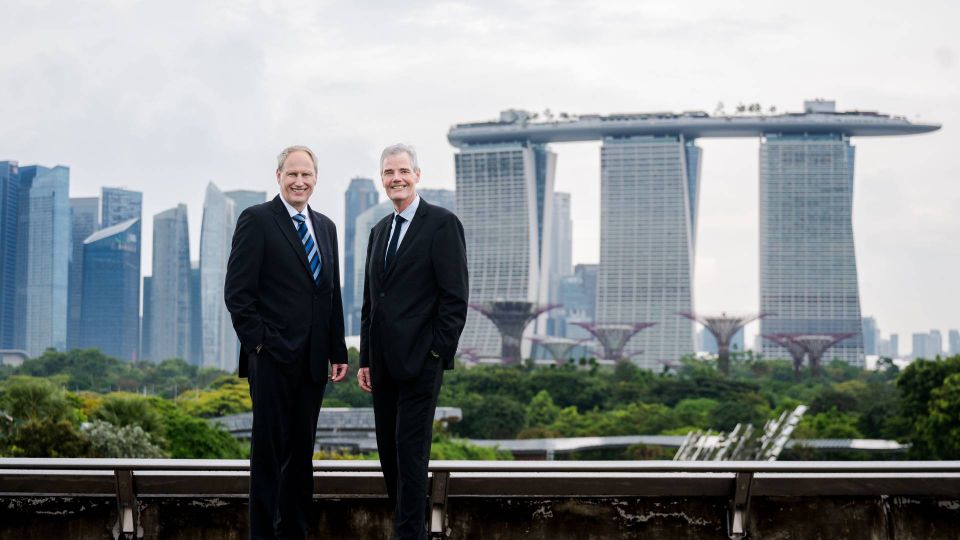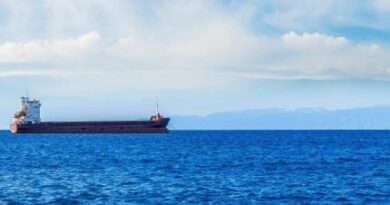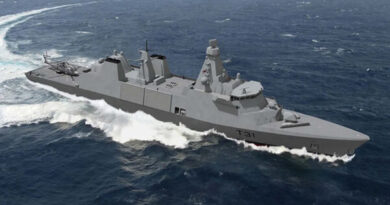two maritime heavyweights have new ambassadors in Singapore
SINGAPORE
Just a few days apart, two of the world’s most important maritime nations, Denmark and Norway, received new ambassadors in Singapore six months ago.
As the world’s largest bunker hub, the world’s biggest transshipment port and the second largest container port, Singapore has a lot in common with the two Nordic countries.
Not only because all three are among the most important shipping nations globally – but also because they are countries with a small population of 5 to 6 million people that, through a combination of decades of industrial heritage, ingenuity and political support, have achieved international influence in the maritime field.
So it’s only natural that the two new ambassadors in Singapore – Denmark’s Jakob Brix Tange and Norwegian Leif Trana – have the maritime sector high on their to-do lists.
”After being here for a while, I’ve realized that there are a lot of similarities between the Singaporean and Danish mindset when it comes to doing business. We have some of the same conditions. We are relatively small nations with around six million inhabitants, who have no natural resources ourselves,” says Jakob Brix Tange in ShippingWatch’s dual interview with the two ambassadors and adds:
”So we both have to live by being innovative, being competent and being able to trade with the outside world.”
Maersk and DNV
The two ambassadors do not view each other as competitors in Singapore, but they are aware of their role as representatives of two nations with ambitions to secure orders – not just in the city state, but across Asia, where Singapore is often used to houses companies’ regional headquarters.
This is for instance the case for Maersk and DNV, both of which are large and global leaders in their respective fields in the maritime supply chain.

Leif Trana has had his hands full since moving to Singapore. In addition to the big, established Norwegian maritime companies, there are many new start-ups on the way. Eco Subsea – which cleans ship hulls – is one example.
”There have been many, many, many meetings with different Norwegian maritime companies. Everything from those who have their own ships, to those who operate the ships, those who have the ships in management and then banks, classification societies and insurance companies, where we have two large Norwegian ones. But also many new, small and interesting companies,” says the Norwegian ambassador.
Building on traditions
Both Trana and Tange are building on the maritime ties that have existed between the countries for many years. This also applies to Singapore-based companies that have invested in the Nordic shipping sector, established themselves in Norway or Denmark or are listed on the Oslo Stock Exchange.
Singapore’s BW Group, with the Sohmen-Pao family at the helm, is a good example of how the three maritime nations benefit from each other’s strengths and resources in the industry. Also in terms of talent, where Danes and Norwegians are regularly hired in companies that are wholly or partly owned by the BW Group.
Hafnia, headquartered in Singapore with a big regional office in Copenhagen, and BW Offshore, headquartered in Oslo and Singapore, are other examples of the synergy between the three nations.
Different backgrounds
Leif Trana and Jakob Brix Tange bring different experiences to their new jobs.
The Norwegian ambassador has worked with both trade and economics in the Norwegian Foreign Service and with international organisations. The job in Singapore is his first as ambassador.
Jakob Brix Tange also comes from the Foreign Service with experience from positions such as Ambassador for Maritime Security and Ambassador to Afghanistan. As a result, topics related to supply chains, terrorism and piracy often come up in his meetings with maritime players in the city.
Both ambassadors also benefit from strong networks and institutions that their compatriots in Singspore have already established.
The Singapore-Norway Innovation Conference, Norwegian Night during Singapore Maritime Week or the gathering point The Danish Seamen’s Church and more recently the annual Christmas bazaar are just some of the events that keep the clusters together.
Can learn from Singapore
The two ambassadors agree on one thing in particular.
Namely, that there is a lot to learn from Singapore – not least about creating a political framework that favors and nurtures the maritime industry. For example, new companies are contacted the moment they establish themselves in Singapore, and their wishes are heard. And not least, they are followed up.
”The companies are given excellent conditions and framework. I’m very impressed with their good customer orientation, where the customers must be understood as the companies and the framework they are given. This applies to shipping, as it does to the entire business community,” says Jakob Brix Tange.
Both ambassadors also benefit from strong networks and institutions which their compatriots in Singspore have already established.
The Singapore-Norway Innovation Conference, Norwegian Night during Singapore Maritime Week or the gathering point The Danish Seamen’s Church and more recently the annual Christmas bazaar are just some of the events that keep the clusters together.
But Singapore is also being challenged by other hubs in the region, as Leif Trana points out. ”Costs have risen a lot, so some are choosing to expand in another, cheaper country in Asia.
A fact that local authorities are aware of.
”The Norwegian cluster is strong and I think it will grow in the future. But the cost level is high, so you may well see some companies setting up operations elsewhere. But Singapore will continue to be the most important hub for Norwegian companies in Southeast Asia,” says Norwegian Ambassador Leif Trana.




